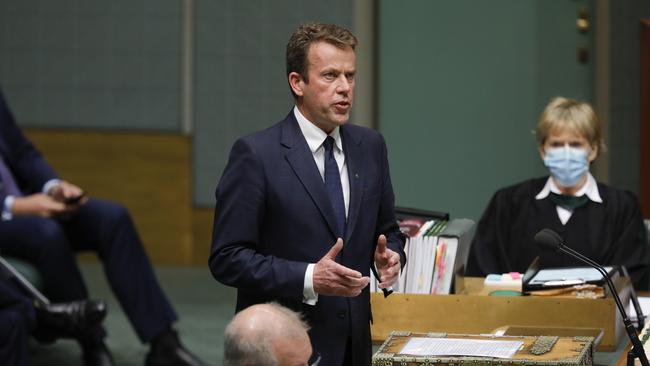
I don’t believe there has ever been a university funding system without some grievous fault, but the one soon to be voted on by the Senate has more than its share.
In the past two weeks we’ve had the spectacle of a rushed inquiry into the latest funding plan — Education Minister Dan Tehan’s Job-ready Graduates package — by the Senate Education and Employment Legislation Committee. It attracted a flood of submissions and two days of intense testimony.
Views about the bill are many and varied.
A few universities, principally the regionally based ones that benefit most, are definite supporters. Most other universities have reservations but see the bill’s passage as being on the whole a better thing than the alternative, which is to continue with the situation they have endured for the past three years with a non-indexed cap on course funding.
The bill, when judged against what it promises, has two major faults. One is easily fixed and one isn’t.
The first problem is that some of the things universities find most attractive about the bill, including the promise of a restoration of indexation for course funding, are not explicitly written into the legislation. In other words, the bill could pass but universities could find that, as a result of ministerial fiat, they don’t have their funding indexed to inflation.
Why this would be is something of mystery given that it was one of the selling points to universities of the Job-ready Graduates package.
Nor is the promise to increase the number of university places across the next 10 years explicit in the legislation.
If the government so desired it could easily put these two items into the bill and relieve the concerns that universities justifiably hold.
The other problem is more fundamental. One of the key design features of the package is its intent to match the total funding for each university course (that is, student fees plus government subsidy) to the cost of the course. The government did this by using a report by Deloitte, which surveyed a sample of universities, to determine course costs.
The trouble is that there are glaring and widely recognised problems with the figures in the report. And the consequence of that is it gives universities financial incentives to subvert the intent of what the government says it wants the package to do.
In his submission to the inquiry, former Australian National University business and economics dean Keith Houghton pointed to comparable US business school data (relating to public universities) that puts the annual cost per student at $5000 in non-research schools. He contrasts this to the Job-ready Graduates package, which assumes the cost of educating a business student in Australia is around $15,600 a year.
The difference is remarkable and it has major consequences. The package will require business students to pay $14,500 a year for an undergraduate business education. As this is way more than the cost of the course, universities have a clear incentive to boost numbers of business students and make major profits (which will subsidise other courses). It won’t matter if they go above the funding cap and lose the meagre government contribution of $1100.
Universities can apply the same strategy to law and humanities courses, which are priced at the same level and also cost the university far less to produce.
The upshot is that universities have a very clear incentive to offer more student places in business, humanities and law at the expense of science, engineering, IT and other technology courses.
This is exactly the opposite of what the government said it wanted. But in these tough times, with universities bleeding money, can they be expected not to?
The government has said it will use the higher education regulator to police universities and stop such revenue maximising behaviour. Good luck with that — and, frankly, it’s not part of role or the expertise of the Tertiary Education Quality and Standards Agency to be a price cop
This problem is not easily fixed except by fundamental changes to the bill. Essentially it would mean the government starting again, which is not going happen.
So it will pass with this flaw and become the latest university funding system with a grievous fault, or it will not pass. And if it doesn’t pass, then universities are in an even more uncertain world.



